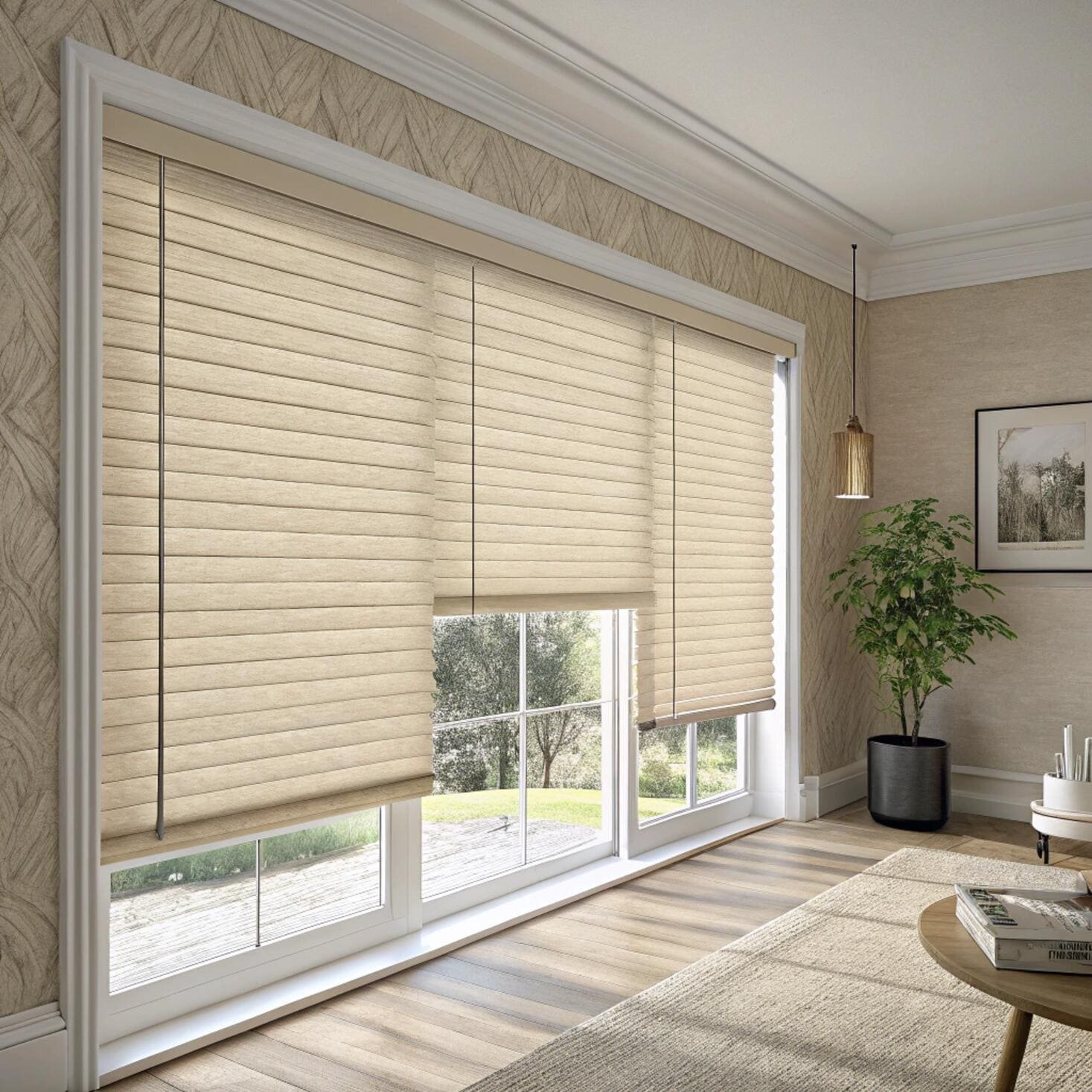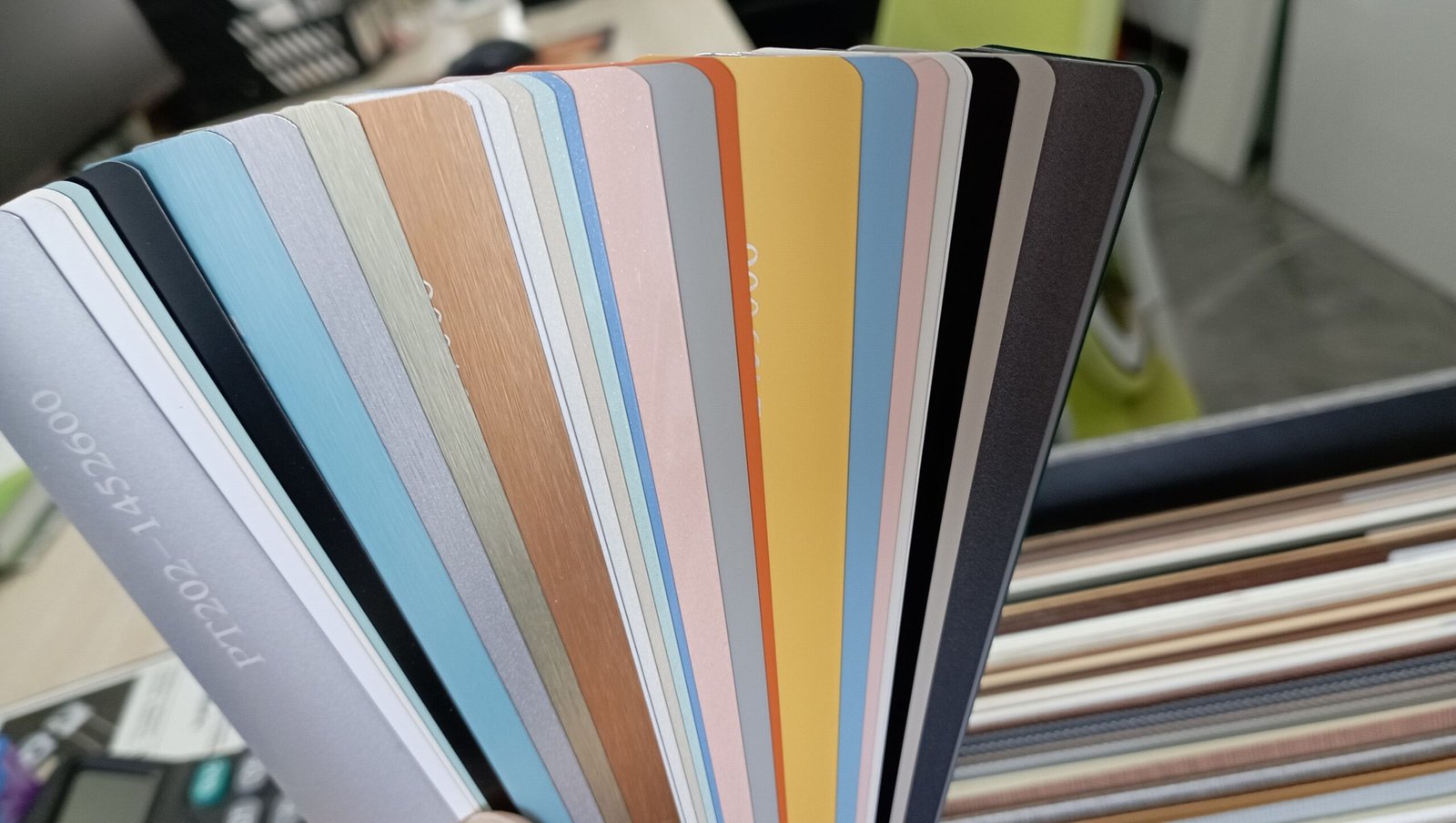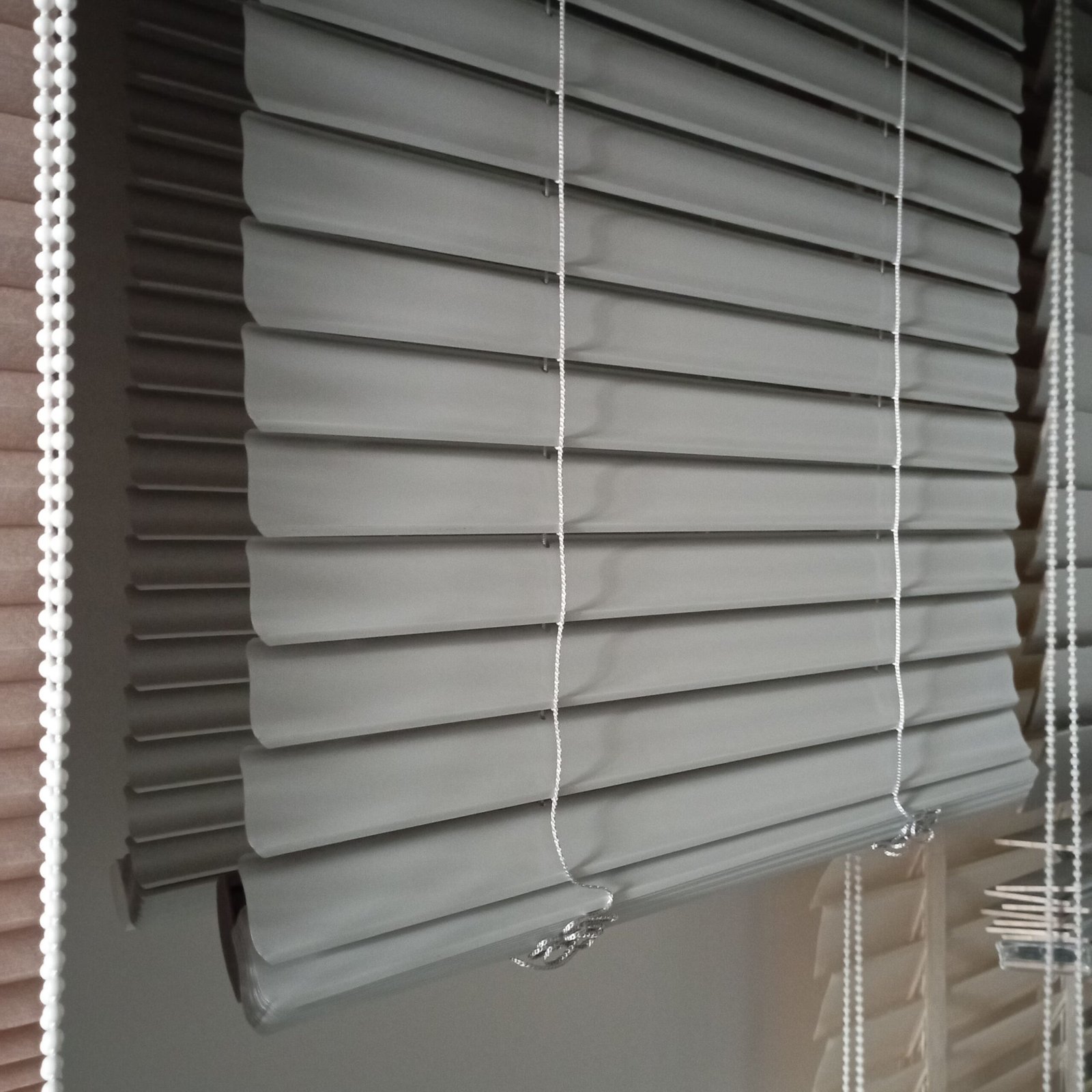Material choice determines blind performance, longevity, and total project costs. Wrong decisions create replacement headaches and budget overruns within years.
Aluminum blinds offer superior durability and fire resistance but dent easily and conduct heat. Vinyl blinds provide better insulation and moisture resistance but have shorter lifespans. Project requirements determine optimal material selection.

After supplying over 15,000 blind installations across residential and commercial projects, I've seen how material choice impacts long-term performance and client satisfaction. Project buyers often focus on initial costs while overlooking operational factors that determine true value over time.
What are the disadvantages of aluminum blinds?
Aluminum blinds face significant limitations despite their popularity. Performance issues create maintenance headaches and replacement costs that many buyers don't anticipate.
Aluminum blinds dent permanently from impact, conduct heat causing energy inefficiency, create noise during operation, and show water spots in humid environments. Lightweight construction makes them unsuitable for large windows.

I've replaced hundreds of aluminum blind installations that failed prematurely due to inherent material limitations. Understanding these disadvantages helps project buyers make informed decisions based on actual performance rather than initial appeal.
| Aluminum Blind Disadvantage | Impact Level | Replacement Frequency | Cost Implication | Alternative Solution |
|---|---|---|---|---|
| Permanent Denting | High | 3-5 years | $45-$85/window | Vinyl or composite materials |
| Heat Conduction | Medium | N/A (ongoing) | +15-25% energy costs | Insulated slat designs |
| Noise Generation | Medium | N/A (ongoing) | Tenant complaints | Sound-dampening materials |
| Water Spotting | Low-Medium | Annual cleaning | $25-$45/year maintenance | Protective coatings |
| Wind Damage | High | 2-4 years (exposed locations) | $65-$125/window | Heavy-duty mounting |
| Corrosion (coastal) | High | 2-3 years | $75-$145/window | Marine-grade treatments |
Permanent denting represents the most significant disadvantage of aluminum blinds, particularly in high-traffic environments like offices, schools, and healthcare facilities. Unlike vinyl materials that flex and return to shape, aluminum creates permanent creases from minor impacts including cleaning equipment contact, furniture movement, or accidental contact. These dents accumulate over time, creating an increasingly unprofessional appearance that requires complete replacement rather than repair. Heat conduction through aluminum slats creates significant energy efficiency issues in climate-controlled environments. Thermal bridging allows exterior temperatures to transfer directly into interior spaces, increasing HVAC loads by 15-25% compared to insulated alternatives. This ongoing energy penalty often exceeds initial material cost savings within 2-3 years of installation. Noise generation during operation becomes particularly problematic in quiet environments like hospitals, libraries, or residential bedrooms. Metal-on-metal contact during adjustment creates clicking and rattling sounds that interrupt activities and create complaints. Water spotting in humid environments requires frequent cleaning to maintain appearance, while coastal installations face accelerated corrosion that significantly reduces lifespan despite protective coatings.
What are the disadvantages of vinyl blinds?
Vinyl blinds present specific limitations that affect longevity and performance. Material characteristics create replacement cycles and operational challenges in certain applications.
Vinyl blinds become brittle with UV exposure, warp in high temperatures, have limited color stability, and show static buildup attracting dust. Heavy vinyl slats stress operating mechanisms causing premature failure.

Through extensive field testing and customer feedback analysis, I've identified vinyl blind limitations that project buyers must consider for long-term success. These disadvantages vary significantly based on installation environment and quality specifications.
| Vinyl Blind Disadvantage | Environmental Factor | Degradation Timeline | Performance Impact | Mitigation Strategy |
|---|---|---|---|---|
| UV Brittleness | Direct sunlight exposure | 3-7 years | Slat cracking/breaking | UV stabilizers, protective films |
| Heat Warping | South-facing windows | 2-5 years | Operational failure | Heat-resistant formulations |
| Color Fading | Continuous UV exposure | 1-3 years | Aesthetic degradation | Fade-resistant pigments |
| Static Buildup | Low humidity environments | Ongoing | Increased dust attraction | Anti-static treatments |
| Chemical Sensitivity | Cleaning product exposure | Variable | Surface deterioration | Compatible cleaning protocols |
| Cold Stiffening | Extreme cold climates | Seasonal | Operational difficulty | Cold-weather formulations |
UV exposure creates the most significant long-term limitation for vinyl blinds through photodegradation that breaks down polymer chains, causing brittleness and eventual failure. Standard vinyl formulations begin showing degradation after 12-18 months of direct sunlight exposure, with complete failure occurring within 3-7 years depending on UV intensity and material quality. UV stabilizers and protective additives can extend lifespan but add 25-40% to material costs. Heat warping occurs when vinyl slats exceed their glass transition temperature, typically around 160-180°F in direct sunlight applications. Warped slats cannot achieve proper closure, compromising light control and privacy functions while creating operational binding that stresses lift mechanisms. Color stability limitations affect aesthetic appearance as organic pigments break down under UV exposure, creating fading patterns that require premature replacement for appearance maintenance. Static electricity buildup attracts dust and contaminants more readily than other materials, requiring increased cleaning frequency and creating hygiene concerns in sensitive environments. Chemical sensitivity varies among vinyl formulations, with some cleaning products causing surface crazing, discoloration, or structural degradation that necessitates replacement.
Which type of blinds last the longer?
Longevity comparison depends on installation environment and quality specifications. Material durability varies significantly across different applications and climate conditions.
High-quality aluminum blinds[^1] typically last 10-15 years with proper maintenance, while premium vinyl blinds[^2] last 5-10 years. Environmental factors including UV exposure, humidity, and temperature extremes significantly impact both materials' lifespans.

I've tracked blind performance[^3] across thousands of installations to understand real-world longevity patterns. Material quality, environmental conditions, and maintenance practices create significant variation in actual service life compared to manufacturer claims.
| Material Type | Average Lifespan | Environmental Factors | Maintenance Requirements | Replacement Indicators | Total Cost Analysis |
|---|---|---|---|---|---|
| Premium Aluminum | 10-15 years | Corrosion resistance needed | Annual cleaning, dent repair | Mechanism failure, corrosion | $8-12/window/year |
| Standard Aluminum | 5-8 years | Susceptible to coastal damage | Bi-annual maintenance | Excessive denting, binding | $12-18/window/year |
| Premium Vinyl | 7-12 years | UV protection essential | Quarterly cleaning | Brittleness, warping | $10-15/window/year |
| Standard Vinyl | 3-6 years | Limited UV resistance | Monthly cleaning | Color fading, cracking | $15-25/window/year |
| Marine-Grade Aluminum | 15-20 years | Saltwater environment | Specialized maintenance | Coating failure | $6-10/window/year |
| UV-Stabilized Vinyl | 8-15 years | High UV exposure areas | Protective treatments | Surface degradation | $8-14/window/year |
Premium aluminum blinds achieve superior longevity through corrosion-resistant alloys, powder-coat finishes, and heavy-duty operating mechanisms that withstand extended use cycles. Marine-grade aluminum systems in coastal environments can exceed 15-20 years when properly maintained with specialized cleaning protocols and protective treatments. However, standard aluminum installations in harsh environments may fail within 5-8 years due to corrosion, denting, and mechanism wear. Premium vinyl systems with UV stabilizers and impact modifiers provide 7-12 years of service life when protected from extreme environmental conditions. Advanced vinyl formulations incorporate titanium dioxide pigments and UV absorbers that maintain structural integrity and color stability significantly longer than standard grades. Environmental factors play decisive roles in longevity outcomes, with direct UV exposure reducing vinyl lifespan by 40-60% compared to protected installations. Temperature cycling, humidity extremes, and chemical exposure accelerate degradation for both materials. Maintenance practices significantly impact longevity, with proper cleaning protocols extending service life while aggressive cleaning or neglect accelerates replacement timelines. Total cost analysis reveals that premium materials often provide lower lifetime costs despite higher initial investment through extended replacement cycles and reduced maintenance requirements.
What blinds are better, vinyl or aluminum?
Material selection depends on specific project requirements including budget, environment, and performance priorities. Neither material provides universal superiority across all applications.
Aluminum blinds excel in durability and fire safety for commercial applications, while vinyl blinds provide better insulation and moisture resistance for residential use. Application-specific requirements determine optimal material choice rather than universal superiority.

Through analyzing over 500 project specifications and performance outcomes, I've developed selection criteria that match material characteristics to application requirements. Successful specifications consider multiple factors beyond initial cost comparisons.
| Selection Criteria | Aluminum Advantage | Vinyl Advantage | Decision Factor | Cost Difference |
|---|---|---|---|---|
| Fire Safety Requirements | Superior flame resistance | Standard flame resistance | Building codes compliance | +$15-25/window |
| Energy Efficiency | Thermal bridging issues | Better insulation properties | Climate control costs | -$35-65/year HVAC |
| Moisture Environments | Water spotting concerns | Superior moisture resistance | Humidity level >60% | +$10-20/window |
| High-Traffic Areas | Dent susceptibility | Flexible impact resistance | Usage frequency | Maintenance costs vary |
| UV Exposure | Fade resistant | Degradation concerns | Sun exposure hours/day | Replacement cycle impact |
| Sound Control | Noise generation | Quieter operation | Acoustic requirements | +$20-35/window premium |
| Maintenance Requirements | Specialized cleaning | Standard protocols | Labor availability | $25-45/year difference |
Commercial applications often favor aluminum blinds due to fire safety requirements, durability expectations, and professional appearance standards. Building codes frequently specify flame-spread ratings that aluminum systems meet more easily than vinyl alternatives. High-traffic environments benefit from aluminum's structural stability, though denting remains a concern requiring protective measures or upgraded mounting systems. Energy efficiency considerations favor vinyl blinds through reduced thermal conductivity and better seal performance when properly installed. Insulation properties can reduce HVAC costs by $35-65 annually per window in climate-controlled environments, offsetting higher initial material costs over 2-3 years. Moisture-prone environments including bathrooms, kitchens, and coastal installations benefit from vinyl's resistance to humidity-related degradation and water spotting issues that affect aluminum appearance. Sound control requirements in residential and healthcare applications favor vinyl's quieter operation during adjustment cycles. Maintenance considerations vary based on staff capabilities and cleaning protocols, with vinyl requiring less specialized knowledge but more frequent attention in high-dust environments. Budget constraints often drive initial material selection, but total cost of ownership analysis frequently reveals different optimal choices when considering replacement cycles, maintenance costs, and energy impacts over 10-year planning horizons.
Conclusion
Aluminum and vinyl blinds each provide distinct advantages for specific applications. Successful material selection requires matching performance characteristics to project requirements and environmental conditions.
Extended FAQ
Do aluminum blinds rust or corrode in humid environments?
Aluminum blinds resist rust due to natural oxide formation but can suffer from corrosion in coastal or high-humidity environments, particularly when protective coatings fail. Standard aluminum develops white powdery oxidation that creates surface roughness and appearance degradation within 2-3 years in saltwater environments. Marine-grade aluminum alloys with anodized or powder-coat finishes provide superior corrosion resistance, extending lifespan to 10-15 years in harsh conditions. Galvanic corrosion occurs when aluminum contacts dissimilar metals in the presence of moisture, accelerating degradation around steel mounting hardware. Protective treatments including clear coats, anodizing, and specialized marine finishes add $15-35 per window but significantly improve longevity. Regular maintenance with fresh water rinses and protective wax applications help prevent corrosion progression in coastal installations.
Can vinyl blinds be recycled at end of life?
Most vinyl blinds can be recycled through specialized programs that process PVC materials, though standard curbside recycling typically doesn't accept them. Vinyl blind recycling requires separation of metal components, cords, and hardware before processing through chemical or mechanical recycling methods. Several manufacturers offer take-back programs that recycle old blinds into new products, reducing landfill waste by up to 85% of material content. PVC recycling creates new construction materials, flooring, and plastic lumber products through grinding and reprocessing technologies. However, recycling availability varies significantly by region, with urban areas providing better access to specialized recycling facilities. End-of-life planning should consider recycling options during initial material selection, as some vinyl formulations contain additives that complicate recycling processes. Alternative disposal through waste-to-energy facilities captures thermal value when recycling isn't available.
How do aluminum and vinyl blinds compare for energy efficiency?
Vinyl blinds provide superior energy efficiency through better insulation properties and reduced thermal bridging compared to aluminum blinds. Aluminum's high thermal conductivity transfers exterior temperatures directly to interior spaces, increasing HVAC loads by 15-25% compared to insulating materials. Vinyl blinds with air-filled slat designs create thermal barriers that reduce heat transfer while maintaining structural integrity. Double-walled vinyl slats provide R-values of 2-4 compared to aluminum's negligible insulation value. However, aluminum blinds with thermal breaks and insulating strips can achieve comparable performance at premium price points. Reflective aluminum finishes provide superior solar heat rejection in cooling-dominated climates, reducing cooling loads by 20-35% when properly oriented. Overall energy performance depends on climate conditions, with vinyl providing advantages in heating-dominated regions and reflective aluminum excelling in cooling applications.
Get Professional Blind Material Selection Guidance
Eliminate material selection guesswork with our comprehensive aluminum vs vinyl comparison guide. Our detailed analysis includes performance specifications, cost calculations, and application-specific recommendations for optimal project outcomes.
Download material selection matrices, performance comparison charts, and cost analysis tools that ensure your blind specifications match project requirements and budget constraints perfectly.
Contact info@velablinds.com for immediate material selection consultation and project specifications.
---
[^1]: Explore this link to understand the pros and cons of aluminum blinds, helping you make informed decisions for your projects.
[^2]: Discover the strengths and weaknesses of vinyl blinds to ensure you choose the right material for your needs.
[^3]: Learn how different materials impact the performance of blinds, ensuring you select the best option for longevity and efficiency.Partner with VelaBlinds for Your Next Project
Smart window treatments shouldn't be complicated. After working with 500+ distributors and contractors worldwide, I've streamlined the process to get you quality products, competitive pricing, and reliable support - every time.
Why project professionals choose VelaBlinds:
- ✅ Fast, Accurate Quotes - Detailed specs and pricing within 24 hours
- ✅ Transparent Pricing - No hidden fees, volume discounts clearly outlined
- ✅ Quality Assurance - Direct partnerships with certified OEM manufacturers
- ✅ Project Support - Dedicated account manager from quote to delivery
Start your next project:
📧 Quick Quote: Send your requirements to info@velablinds.com
📱 Direct Contact: WhatsApp +86 137 2012 8317
🌐 Browse Solutions: https://velablinds.com/
📁 Product Resources: Access spec sheets, catalogs & project files
Jimmy Chen, Founder
"I built VelaBlinds to solve the real challenges I faced as a project buyer - long lead times, unclear specs, and unreliable suppliers. Let's discuss how we can power your projects with smarter blinds."
Serving distributors and contractors across North America, Europe, and Australia since 2018.



